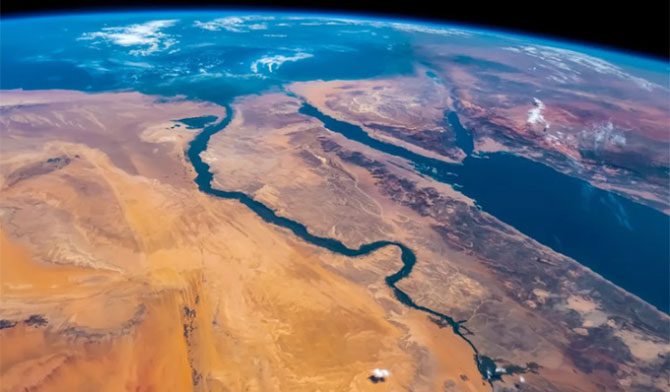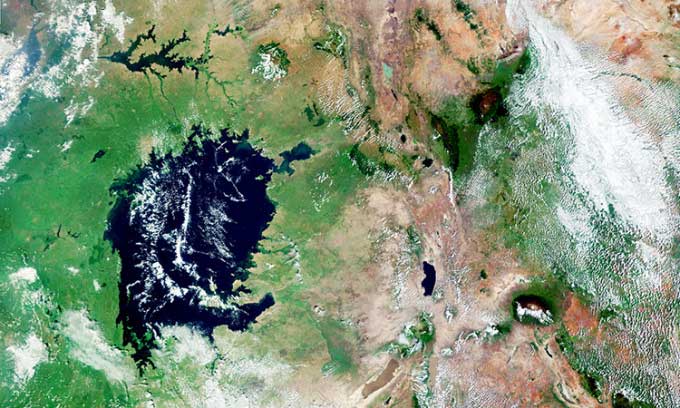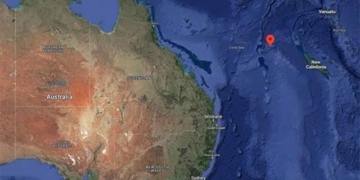Since the time of Ancient Egypt and Rome, humans have strived to uncover the source of the Nile River. According to ancient Egyptian tradition, the god Osiris was believed to have discovered the source of the Nile and sowed it into the earth to bring life to the people. Meanwhile, Roman explorers like Herodotus also documented their encounters with the Nile during their global explorations.
The quest for the source of the Nile—the longest river on Earth, stretching over 6,650 km—has puzzled humanity for thousands of years. Even today, in an era rich with geological knowledge and sophisticated satellite systems, this issue remains complex.

The Nile is the longest river in the world, flowing through northeastern Africa with a length of over 6,650 km. (Photo: Emre Akkoyun).
In short, the Nile has two main sources: the Blue Nile from Ethiopia—which contributes two-thirds of the Nile’s total water—and the White Nile from the Great Lakes region of Africa. However, looking back at history, the story is not so straightforward.
The ancient Romans had a saying “Nili caput quaerere”, which means “to seek the source of the Nile” in Latin. This phrase was used to describe a desperate effort to accomplish the impossible.
Undeterred by challenges, the Romans attempted to trace the source of the Nile in a mission set forth by Emperor Nero in 60-61 AD. With the help of Ethiopian guides, a small group of the emperor’s guards traveled along the Nile to the mysterious lands of Africa.
It remains unclear where the quest ended, but according to accounts, the guards reached a large body of water and believed it to be the source. Some think this location is a canyon near Juba, South Sudan today, while others believe they traveled further south, nearing Murchison Falls in Uganda.
Regardless of the exact location, the guard’s expedition failed to solve the mystery. Emperor Nero died by suicide in 68 AD, and it seems the mission was abandoned after the Romans ruled out the possibility of crossing Egypt and invading deeper into Africa.
Prior to the Romans, the ancient Egyptians were also eager to discover the origins of the Nile, especially as their civilization depended on the river to nourish the land and serve as a transportation route. It is said that the Egyptians traced the Nile as far as the capital Khartoum, Sudan. An expedition led by Pharaoh Ptolemy II Philadelphus (who ruled Egypt in the 3rd century BC) identified that the Blue Nile might originate from the mountains of Ethiopia.
While the search for the Blue Nile was on the right track, there is no evidence that the ancient Egyptians ever explored another crucial piece of the puzzle: the White Nile.

Lake Victoria from space. (Photo: ESA)
Today, most experts agree that the Nile has two main sources: the Blue Nile and the White Nile, which converge in Khartoum, Sudan, before continuing northward to Egypt. The Blue Nile originates from Lake Tana in Ethiopia, while the White Nile has its source in the area surrounding Lake Victoria in Jinja, Uganda.
This is why Lake Victoria, the largest lake in Africa by area, is often considered the source of the Nile. However, renowned explorer Christopher Ondaatje explained in the 2016 issue of Geographical that Lake Victoria itself is a reservoir fed by other rivers.
In 1996, Ondaatje undertook a daring expedition across Africa to determine the source of the Nile and discovered that the waters of Lake Victoria flow into Lake Albert. The White Nile does not flow directly from Lake Albert but from the Kagera and Semliki Rivers. These two rivers originate from the Ruwenzori Mountains in Congo.
Ultimately, he concluded that the White Nile may stem from the Kagera and Semliki Rivers. “The Ruwenzori Mountains are as crucial to the Nile’s water supply as Lake Victoria,” he wrote.
In summary, the Nile does not have a single source but is nourished by a complex system of rivers and water bodies. While many believe it is possible to pinpoint the exact source using maps, the reality is rarely that simple.


















































